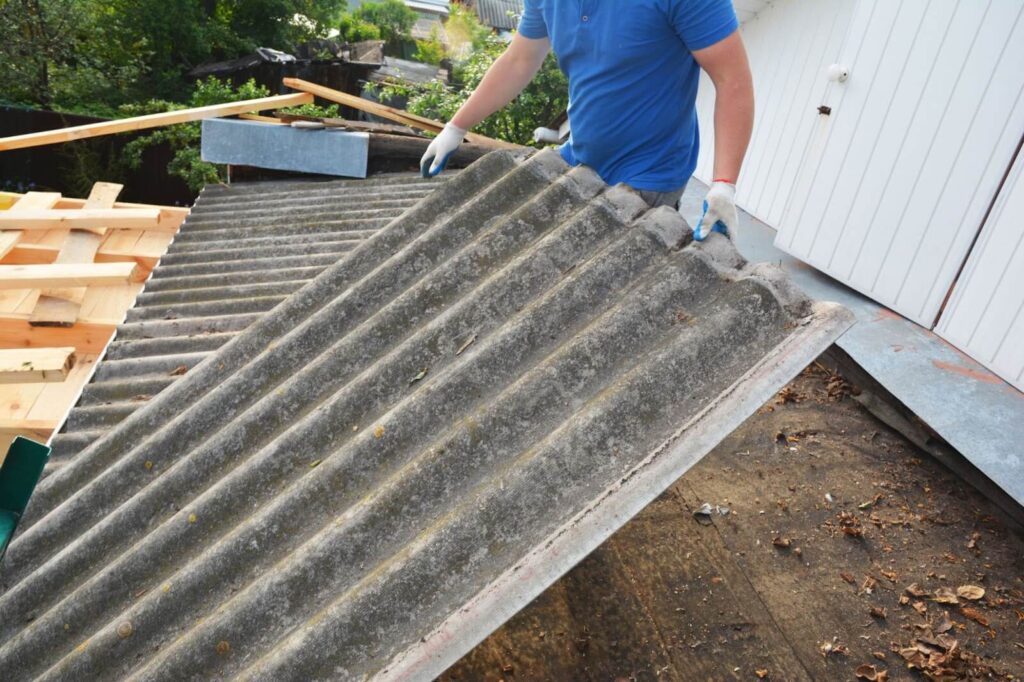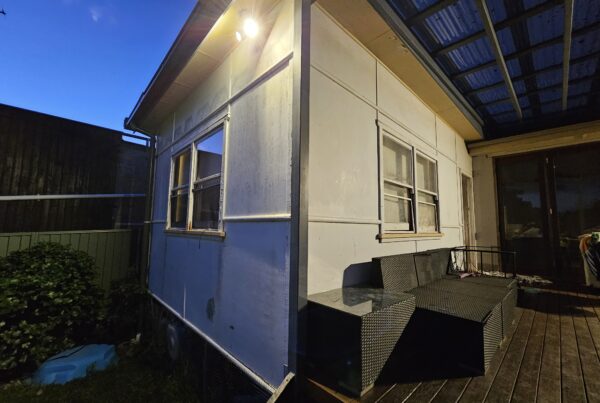Roofing products constituted only 2% of all asbestos consumption from 1920 to 2003, the year the nationwide asbestos ban took effect. However, successive studies performed by the Asbestos Safety and Eradication Agency (ASEA) stated that asbestos roofing is one of the major sources of asbestos exposure and a priority for removal.
That said, we can’t deny the sturdiness this kind of roofing provides. According to an ASEA report, the assumed mean lifespan of asbestos roofing ranges from 40 to 60 years, second only to metal roofing. Some damage is possible throughout its service life, but in this case, it’s better to undertake asbestos roof removal in Sydney than attempt to patch the roof up.
No Replacements Available
There’s no replacing deteriorating asbestos roofing with a fresh one after Australia banned asbestos for construction in 2003. The only exemptions to the ban include asbestos used for research purposes and for waste management, both of which need explicit permission (the former from ASEA, the latter from the Minister of the Environment and Water).
As the part of the house that keeps your head cool and dry all year round, you don’t want your house to remain roofless for too long. Tarpaulin covers are only designed to protect ongoing roofing works, not for long-term protection from the elements. Sooner or later, you’ll have to choose from non-asbestos roofing options, and we prefer sooner.
Some may argue that encapsulation can prevent the dangers of asbestos degradation. Although a common measure, it also means living with asbestos that might one day be free to release its fibres into the air again. More importantly, the elastomeric coating used in the process requires an assessment every six months and a reapplication every two years.
Liability to the Community
Just because asbestos roofing can last up to 60 years doesn’t mean it hasn’t suffered from wear and tear during its service life. Non-stop exposure to the sun and rain gradually eats away at the asbestos, leading to dangerous asbestos fibres going airborne.
Studies show that the fibres can remain in the air for 48 to 72 hours after being disturbed – enough time for them to enter one’s system. Not to mention there are plenty of them to go around in a cubic metre, ranging between 300 and 16,000 fibres depending on factors like distance from the source and extent of deterioration.
Hazardous asbestos fibres can travel far when carried by the wind, affecting large sections of the community or suburb. No amount of asbestos is safe, and prolonged exposure increases one’s risk of asbestos-related diseases, namely mesothelioma. The Australian Institute of Health and Welfare states that 700 to 800 people die from this aggressive cancer annually.
Even after their time in the air is over, asbestos doesn’t become any less life-threatening. It settles to the ground and mixes with the soil, which has its fair share of exposure risks. The fibres can become airborne again with a strong enough gust.
Dealbreakers in Real Estate
Given the health effects asbestos poses, it isn’t unusual for real estate buyers to disqualify homes with suspected asbestos roofing. Then again, hiding the fact that the home actually has asbestos is worse because it’s a violation of state law.
Make no mistake: homes containing asbestos can still be put up for sale. However, people tend to want to move into their new residence without having to shell out extra to deal with unforeseen problems. On top of that, removing all of the asbestos before selling the home can justify jacking up the asking price (provided it’s reasonable).
Securing the necessary documentation regarding all the asbestos-related work done on the property can support your claim of an asbestos-free home. Assume that buyers will bring a professional home inspector along for the on-site visit, so always have evidence on hand.
If you can’t be bothered with asbestos removal and disposal before selling the house, your other option involves fully disclosing the toxic material’s presence. In NSW, real estate agents are required to do so when the property is listed in the loose-fill asbestos insulation (LFAI) register. Apart from LFAI, they must also disclose other environmental hazards, whether or not related to asbestos.
Coverage Headaches
Home insurance policies usually exclude damage involving asbestos materials or don’t pay enough for asbestos repair costs. Financial experts state that, considering the immense number of homes still containing asbestos, premiums would spike across the board if insurance companies began covering asbestos.
In other words, asbestos roof removal might not be covered under your home insurance. It may be covered if the damage was caused by an insured event, but the policy may only pay for the damaged part of the roof. On the latter note, partial damage to an asbestos roof can effectively mean the whole roof is at risk of further deterioration, even with repairs done.
Of course, some policies may be different. Consult your insurance provider about your policy in relation to asbestos.
Conclusion
No matter how you look at it, keeping an asbestos roof for as long as possible isn’t sound in the long term. Professional asbestos roof removal may be a hefty investment, but it’s cost-effective relative to other stopgap solutions explained here.







